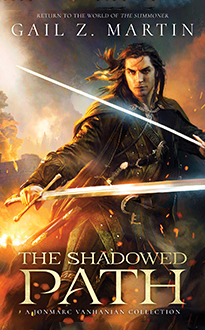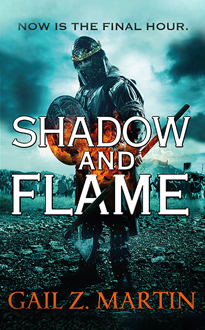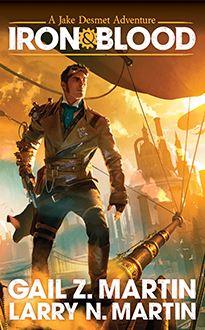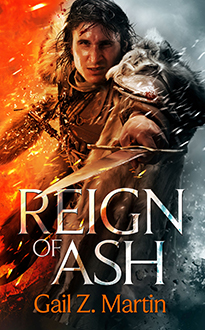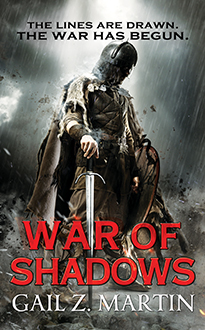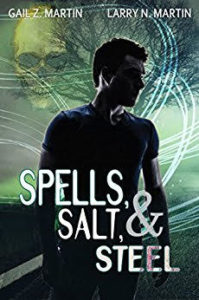World building is arguably the most fun—and most difficult—part of writing. Get it right, and your world becomes as memorable as your stories and characters, a place that lives on in the imagination of your readers, as tangible as somewhere they grew up or went on vacation. Get it wrong, and you’re no more memorable than a truck stop on the highway—or worse, you’re memorable for all the wrong reasons.
I’m guessing there are as many ways to world-build as there are authors, and no single right way as long as readers like the outcome. So I’ll just share how I do it, and let you take it from there.
For me, world building, plot and character are all inextricably linked. I may begin with an idea about a plotline, or have a clear “vision” for a character whose story I’d like to tell, or a place that would be a great setting for an adventure. Whichever one I start with, I need to find the right two components to go with it so that it all goes together seamlessly.
If I start with a character, then I have to ask myself, “What society and landscape shaped this character?” We’re all influenced by the place in which we grow up, or make our home. What influences would have produced a person with my character’s values, interests, world view, prejudices, belief systems, abilities, fears, likes and dislikes? That’s going to go a long way toward helping me create the right kind of environment for the story, and it’s going to shape the story itself, because certain types of stories are more plausible in some situations than in others.
If the original inspiration comes from the plot, then I have to figure out what type of setting/environment will make the plot situation likely—even possible. I have to think about how my choices of setting could enhance—or dampen—the plot and whether I can envision those settings in a way that make them different from places that readers have been before. (The truck stop analogy again—we’ve all been to at least one, and they all look alike. Nice if you want consistently clean restrooms, but zilch for ambiance.)
And if the setting is what I begin with, then it’s going to be unusual, and there’s something about it that draws me. Certain types of stories are more likely in specific types of places—crowded cities full of transients and intrigue, for example, versus a rural setting where no one leaves home and strangers are automatically suspicious. In this case, there’s something about the setting that will inevitably suggest the plot and sketch out the characters.
The fourth component is time/technology. London in 2150 is very different from London in 1250. This will determine everything from types of communication, speed of travel, methods of warfare, and other crucial details. Will your characters be spending gold coins or swiping a debit card? Is information known instantaneously around the world, or at the speed of sailing vessel (or horse)?
For me, the best kind of research mixes both books and experience. I’m a museum junkie, and I have been going to living history sites since I was a kid, so I’ve grown up with the sound and smell of a blacksmith’s shop, rudimentary knowledge of cooking on an open hearth, horse-drawn conveyances, and everything from period clothing to old-fashioned medicines, entertainment and art. If I can’t go a museum, there’s always the History Channel, or the Travel Channel, web sites, travel guide books, and even old-fashioned travelogues given at your local AAA, library or community center. It’s amazing how the smallest details that seem insignificant can end up adding to the texture of your next book.
It also helps to be a “critical” consumer. When you watch a movie or TV show/series or read a book, pull back enough to think about whether or not the world building is working for you. Does it immerse you in the story, or jar you out of it? Is it a distraction, or so integral the story wouldn’t be the same without it. What is memorable? What is clichéd? Could the characters be anywhere, or are they so much a product of time and place that they could be nowhere (and no-when) else? Plots can be recycled (think about Hamlet done in Shakespeare’s time and re-done into modern adaptations), but each time, the time/place alters the story—if it doesn’t, something’s missing.
Most importantly, have fun with it! If you’re not fascinated by your world, your readers won’t be, either. Enjoy!
Please enjoy this excerpt from my short story, “Among the Shoals Forever”, excerpted from The Mammoth Book of Women’s Ghost Stores: https://www.4shared.com/office/e5deWqV_/An_Excerpt_from_Among_the_Shoa.html
And this scene from “Buttons”, excerpted from Magic: https://www.4shared.com/office/20nwnf1S/Buttons_excerpt_1.html



